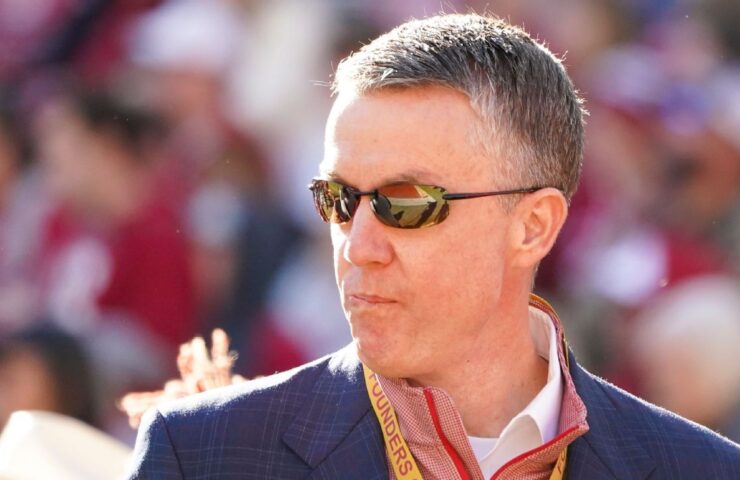
How the spoils will get divided from NCAA settlement
-
Dan WetzelJun 7, 2025, 10:10 AM ET Close Dan Wetzel is a senior author concentrated on investigative reporting, think piece and function storytelling.University of Alabama athletic director Greg Byrne has worked in college athletics for over 3 years, including previous stints as the AD of Arizona and Mississippi State.He’s seen it all, at least up until late Friday night, when he began officially facing a brand-new obstacle– paying college professional athletes straight, or more specifically choosing which teams Alabama would pay directly, and how much, in an effort to keep the entire operation going.Editor’s Picks 1 Related Claudia Wilken, a federal judge in California, authorized a settlement Friday in between the NCAA and professional athlete complainants that developed an earnings sharing system
that enables athletic departments to pay out about$20.5 million straight to their players. The arrangement lasts 10 years, and the money is anticipated to increase annually.While college athletes have been taking in outside payments for their name, image and likeness, the so-called House settlement enables it to come from school coffers( media rights, ticket sales, and so on).
What was as soon as mostly unregulated is now mainly regulated.NIL deals will have to go through a clearinghouse to figure out whether they remain in line with actual endorsement or marketing value– state Caitlin Clark and State Farm– and not simply a workaround for boosters to pay recruits.Whether all of this can endure extra legal difficulties, useful functional issues and/or schools actually following the guidelines remains to be seen. The potential magnitude of the House case is indisputable, though.” I tell our coaches and our students,’ The 3 most considerable occasions in the history of college sports are, initially, the NCAA’s foundation [1905], second, the adoption of Title IX [1972] and all the chances that were produced because of it, and, third, your home settlement,'”Byrne informed ESPN.Byrne invites an established system to replace the “fluidness “of the previous couple of years and mores than happy for professional athletes to be paid. But there on the cutting edge of application, athletic directors have to make this work.”It’s difficult, “he said.Start with this: Not every student-athlete will now be paid. Undoubtedly, the vast majority won’t. Byrne needs to weigh how to allocate the$20.5 million in a way that makes one of the most sense competitively and economically for Alabama. The school has a powerhouse football program, however it also has 20 other groups, including current national champions in softball, gymnastics, women’s golf and guys’s golf. Male’s basketball also reached the 2024 Final Four.Alabama, like many other
significant universities, tries to win in everything. “I tell our coaches,’We do not have a sport here at the University of Alabama just to have a sport,'” Byrne said.For generations, though, it has actually been one sport– football– that has actually made most of the money to fund those other groups. Alabama, like many places, saw only football($26.4 million)and males’s basketball ($5.9 million )deliver a revenue in fiscal 2024, according to public records. Everybody else lost, sometimes millions– females
‘s basketball, for instance, can be found in$4.2 million under.The department expenditures ($262.8 million )overtook profits($ 234.8
million)for a$28 million deficit. That’s up from$13 million the year prior– primarily, the school states, due to one-time costs associated with Nick Saban’s retirement.No one is going to sob for the Crimson Tide, but with a new$20.5 million expense striking budget plans(and increasing each year), even the biggest schools are trimming staff, reallocating funds and attempting to determine how to correctly plan for a brand-new world while
maintaining standard success.Does that indicate investing nearly everything in football and men’s basketball, therefore leaving other groups out of the money, regardless of prospective grievances? Does it mean cutting programs? Can places preserve robust support systems in, state, nutrition or psychological
health?The old method wasn’t”fair “to football and males’s basketball players, who didn’t have an option as the money they created was spent somewhere else, but your house case brings into question whether broad-based participation, not to mention success, is even possible?Ohio State, for example, fields 33 university teams. Boston College has 29.
Stanford 36. Do a few of them need to relocate to club-program status?Or put it in this manner: If this is a”challenge”even in Tuscaloosa, picture what everybody else is facing.”How do you keep your department healthy long-term so you can keep using opportunities? “Byrne stated. “In the past, we tried to be all things to all
people. Every coach is going to want income share for their athletes, and I do not blame them.”However if the objective is to have as many programs as you can,”he continued, “you are going to have to be strategic.”One rough initial estimate within the industry is that 75%of the$
20.5 million will get designated to football players, 15% to men’s basketball, 5 %to women’s basketball and 5%to other sports– softball, beach ball
, hockey, soccer, lacrosse or whatever specific sport a school prioritizes.In usefulness, athletic directors throughout
the nation believe that number will alter even further to football and males’s basketball due to the fact that success there produces the ticket sales, marketing dollars, merchandise income and donations needed to prop up the whole business. A dollar bought a great quarterback or point guard will produce a monetary return. A dollar bought a swimmer nearly assuredly will not.Even at the greatest schools, there is a finite quantity of money– and now a $20.5 million hole to fill.No one wants to cut sports. No one wants to undercommit to specific teams. College athletic leaders entered the business to supervise more sports and more professional athletes in more ways, not to contract or
pinch pennies.Business is organization, however, and college sports just ended up being a lot more about organization.
